All of us are searching for what is good, true and beautiful. Here, we offer two teachings and one letter from our teacher, Thich Nhat Hanh on how to find the good, the true and the beautiful inside of us, going back to the island within, and invoking the qualities of the Bodhisattvas (great compassionate beings) within us. These are qualities of understanding, compassionate listening, wise action and never-abandoning.

On Goodness, Truth and Beauty
Feeling Incomplete
“Often we have the feeling that there is nothing good, beautiful, or true inside us. We feel incomplete, so we wear cosmetics and other adornments, or even undergo cosmetic surgery in order to compensate. When we do these things, we feel we are somehow being deceptive, but we cannot stop. At the same time, we realize that others are also deceiving us. All of us are victims, trying to make ourselves feel less unworthy. We feel we are half a person, and we wander all over the globe looking for our other half. If we would look more carefully, we would see that this feeling arises from a wrong perception.
We all want something that is good, beautiful, and true, something we can believe in, and yet we look for these qualities in others and not in ourselves. Then, when we think we have found goodness, beauty, and truth in someone, love arises in us, and we become involved in a relationship. It is only after some time that we realize that we have misperceived—that what we thought was good, beautiful, and true was really just superficial—and we feel wronged and go and look for another relationship, another object on which to project the ideals of goodness, beauty, and truth.”
Searching for a Spiritual Teacher

“For our spirit, we do the same. We look for a perfect teacher, and sit at the feet of this teacher and that teacher as part of our search. We are a “spiritual seeker,” and, as such, we are happy that people see us as good, beautiful, and true. We have the appearance of virtue and of loving others, but these are only more cosmetics. Then we find a teacher we like, and we feel that we have found our missing half. But, like so many teachers, our new teacher turns out not to be in touch with his own truth, beauty, and goodness, and when we discover this, we abandon him and go forth looking for another teacher. We can continue these patterns the whole of our life, always looking for someone to love and someone to guide us.
Then one day, we meet a very special teacher who tells us, “Don’t look outside yourself, Within you are all of the qualities you have been looking for!” She is our root teacher, and she tells us, “All living beings have the pure, clear, complete nature within themselves. You only have to return to yourself to be in touch with the good, the beautiful, and the true that are already within you.” The search that has been going on for many lifetimes finally comes to an end.”
Waking Up to our Real Truth, Goodness and Beauty
“Real beauty is always good and truthful. True goodness contains true beauty and real truth. Truth is always good and beautiful. Truth, beauty, and goodness inter-are. If what we thought was beautiful does not contain goodness and truth in it, it is not real beauty. When we love someone, we have to avoid losing contact with our own goodness, beauty, and truth, and with theirs as well, and then we won’t be deceived by appearances. This is the Great Awakening. When we are awakened, we understand what the Buddha meant when he said, “How amazing that all living beings have the basic nature of awakening, yet they don’t know it. So they drift on the ocean of great suffering lifetime after lifetime.”
Love is a great opportunity. If it happens that you can touch the truth, beauty, and goodness in someone you love, you will be able to go back and touch the same within yourself. A true lover always helps his or her beloved do this. The same is true in the teacher-student relationship.”…..
“Teachers and students need to be “associate lovers,” helping each other and all living beings touch the goodness, beauty, and truth in themselves. This is the Path of Awakening.Excerpts were taken from a talk titled ‘The Path of Awakening‘ given at Plum Village on November 20, 1997. It was translated from the Vietnamese by Sister Annabel Laity and edited for publication by Arnie Kotler. You can find the full transcript here.
Finding Our True Home
Searching for our home
“Jesus, as soon as he was born, had to be on the run right away and to be a refugee, a runaway without a home. When he grew up and became a young man, it was the same; he was still a wanderer with no real home to return to. In one of his discourses, he protested that even the birds have their nests to return to or the rabbits and squirrels have their burrows; but the Son of Man has no place to lay his head, no place to call home.
Siddhartha, as an adult, found himself in a similar situation. He was born into a royal family that was wealthy and privileged. He could have anything he desired. He had a beautiful wife and a good son. He had a bright future ahead of him; destined to be king and ruler of a great empire. But still, he did not feel comfortable even with all this. He did not feel at home. He was not at peace. Therefore, one day, he decided to leave his family in search of his true home, in search of inner peace.
Both Jesus and Siddhartha were searching for their true home. They wanted to find a warm abode where they would not have to search for anything anymore and where they would feel truly at home and at peace.” ….
Where is our True Refuge?
“Some of us have a homeland, living in the country where we were born, yet we still want to escape and go somewhere else. We feel like we do not have a homeland. Some Jewish people feel that they still do not have a homeland. They have been wandering and searching for a homeland for thousands of years – for a place, a piece of land to call home. Even to this day they have yet to find their homeland. And we – the French, the Americans, the British, and the Vietnamese – we all have a country to call our homeland, but still, we do not feel contented and some of us want to leave. This is because we have not found our true home in our heart. …..
We too, should return and take refuge in that abode and not take refuge in any other person or thing. That abode of refuge is the ‘Island of Self’; it is the Dharma, and there, one can find peace and protection; one can find our ancestors and our roots. This is our true home – our inner island where there is the light of the true Dharma. Returning there, one finds light, one finds peace and safety, and one is protected from the darkness. The ‘Island of Self’ is a safe place of refuge from the turbulent waves that can otherwise sweep us away. Taking refuge in this island within is a very important practice.”
Finding the Island of Self
“Dear monks, practice being islands unto yourselves, knowing how to take refuge in yourselves.” Those were the words the Buddha uttered just one month before he had passed away. If we consider ourselves to be soul mates of the Buddha, to be real students of the Buddha, we should take his advice and not go looking for our homeland, our true home, in time and space. …..
We do not need to practice for many years or to travel far to arrive at our true home. If we know how to generate the energy of mindfulness and concentration, then with each breath, with each step, we arrive at our true home. Our true home is not a place far removed from us in space and time. It is not something that we can buy. Our true home is present right in the here and now; if only we know how to return and to be truly present to it.
Coming Home in the Present Moment
The other day, Thầy was reflecting on what message to send to his friends and students abroad so that they can practice, so that they can be like Jesus or be like the Buddha. Thầy then wrote this calligraphy: “There is no way home, Home is the way.”
The means and the ends are not two separate things. There is no way to return to our home. Our home is the way. Once we take a step on that path home, we are home right in that moment. This is true to the practice of Plum Village. There is no way to happiness, Happiness is the way. Recently, Thầy also shared in his Dharma Talk that, There is no way to nirvana, Nirvana is the way. Every breath and every step has the capacity to bring us right back to our true home, right in the here and now. This is the fundamental practice of Plum Village.Excerpted from ‘Home is the Way – A Christmas message from Thich Nhat Hanh, 2012‘
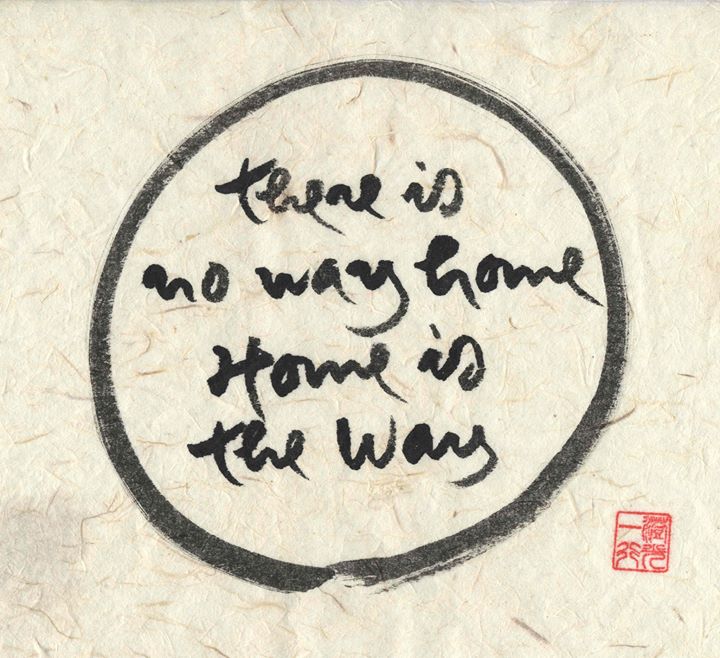
Cultivating our Bodhisattva Qualities
“Bodhisattvas are awakened beings. We also have our nature of awakening, no less than they, but we have to train ourselves. One way is to practice invoking the names of four great bodhisattvas—Avalokiteshvara (Great Compassion), Manjushri (Great Understanding), Samantabhadra (Great Action), and Kshitigarbha (Great Aspiration). When we recite their names in a deep, relaxed way, every word can touch our hearts and the hearts of those listening. In the beginning, we still feel separate from these bodhisattvas. But, practicing steadily, we realize that we are Avalokiteshvara, Manjushri, Samantabhadra, and Kshitigarbha. It is not important whether they were historic figures, born in such and such a year or in such and such a place. The key is to realize their qualities within ourselves.”
Avalokiteshvara (Bodhisattva of Great Compassion)
We invoke your name, Avalokiteshvara.
We aspire to learn your way of listening in order to help relieve the suffering in the world. You know how to listen in order to understand. We invoke your name in order to practice listening with all our attention and openheartedness. We will sit and listen without any prejudice. We will sit and listen without judging or reacting. We will sit and listen in order to understand. We will sit and listen so attentively that we will be able to hear what the other person is saying and also what is being left unsaid. We know that just by listening deeply we already alleviate a great deal of pain and suffering in the other person.
“Avalokiteshvara Bodhisattva represents great love, great compassion, and deep listening. When you manifest these qualities, you become the Bodhisattva Avalokiteshvara. Avalokiteshvara vows to listen deeply in order to help relieve the suffering in the world. To listen deeply, you must be one hundred percent present. Listening with all your attention, you release the past and the future, and focus entirely on the other person. We have this ability, but we seldom use it. We are usually lost in the past or the future and listening with just half an ear. The practice is to be present and to listen with one hundred percent of ourselves.
One day I was weeding the garden with a teenager, and he said to me, “Sometimes I see something that is very beautiful, but my mother says it is not beautiful.” I looked deeply into his situation, and I said, “Is there a young lady you think is beautiful but your mother does not?” He was shocked. “How did you know that?” He thought I could read his mind, but when you listen deeply, with all your attention, you can understand many things right away. After that, he revealed the whole story to me, and I had the opportunity to help him. I said, “True beauty is profound. Don’t be attracted just by a smile, hair, or eyes. Try to see the depth of beauty.” I suspected this is what his mother had wanted to tell him, but had not been able to. The aim of deep listening is understanding. When someone is suffering, if she can find one person with the willingness and capacity to sit quietly beside her and listen, that is a great encouragement. Whether what she says is easy to hear or shocking, we don’t reject it. We train ourselves to listen in order to understand. When we listen deeply, we are Avalokiteshvara. When we understand deeply, we are Manjushri. Looking with the eyes of interbeing, we see that Avalokiteshvara and Manjushri are not separate.”
Manjushri (Bodhisattva of Great Understanding)
We invoke your name, Manjushri.
We aspire to learn your way, which is to be still and to look deeply into the heart of things and into the hearts of people. We will look with all our attention and openheartedness. We will look with unprejudiced eyes. We will look without judging or reacting. We will look deeply so that we will be able to see and understand the roots of suffering and the impermanent and selfless nature of all that is. We will practice your way of using the sword of understanding to cut through the bonds of suffering, thus freeing ourselves and other species.
“Manjushri Bodhisattva represents great understanding. When you pay respect to the qualities of great wisdom and understanding, you are paying respect to Manjushri, and, at the same time, you are paying homage to these qualities in yourself.
These days everyone is running so quickly. We sit in a silent meal, but we might be still running. Whether we are sitting, walking, standing, or eating, we have to learn to stop. Bodhisattva Manjushri knows how to stop—in order to see deeply into the heart of things and into the hearts of those around him. We have to learn to stop our mind in order to look deeply. As Avalokiteshvara, we learn to listen without prejudice. As Manjushri, we learn to look without judging. To understand the suffering of the Palestinians, for example, Israelis have to learn to look in the way a Palestinian looks. To understand the Israelis, Palestinians must learn to understand an Israeli—his suffering and his fear. After looking deeply in that way, we see that both sides suffer, that each person has anger and fear. If we continue to punish each other, we will not go far. It is better to take the other person’s hand and work together toward a solution that is beneficial for both sides. In our Sanghas, if we notice two members who are unable to look at each other, we have the responsibility to help them communicate by practicing stopping and looking deeply, without prejudice.”
Samantabhadra (Bodhisattva of Great Action)
We invoke your name, Samantabhadra.
We aspire to practice your vow to act with the eyes and heart of compassion, to bring joy to one person in the morning and to ease the pain of one person in the afternoon. We know that the happiness of others is our own happiness, and we aspire to practice joy on the path of service. We know that every word, every look, every action, and every smile can bring happiness to others. We know that if we practice wholeheartedly, we ourselves may become an inexhaustible source of peace and joy for our loved ones and for all species.
“Samantabhadra is the bodhisattva of great action and universal goodness. He works hard and has the willingness and capacity to help. To act deeply, we must understand and love deeply. To save the world, we need the eyes of Manjushri, the heart of Avalokiteshvara, and the hands of Samantabhadra.
People who do not practice suffer a lot. Entering a spiritual practice you feel joyful. If you aren’t a joyful practitioner, look more deeply in order to discover the joy that exists within you. Sometimes one piece of bad news invades our whole mind, and we forget the many joyful elements in us. The practice is to observe our unfortunate situation—yes, something happened—but also to stay in touch with the many joyful elements, so we will not drown in our difficulties.
The practice of Samantabhadra is not to talk a lot, but to act.”
Kshitigarbha (Bodhisattva of Great Aspiration)
We invoke your name, Kshitigarbha.
We aspire to learn your way of being present where there is darkness, suffering, oppression, and despair, so we can bring light, hope, relief, and liberation to those places. We are determined not to forget about or abandon those in desperate situations. We will do our best to establish contact with those who cannot find a way out of their suffering, those whose cries for help, justice, equality, and human rights are not being heard. We know that hell can be found in many places on Earth. We will do our best not to contribute to creating more hells on Earth, and we will help transform the hells that already exist. We will practice in order to realize the qualities of perseverance and stability, so that, like the Earth, we can always be supportive and faithful to those in need.
“Kshitigarbha Bodhisattva represents the great vow to save all living beings, especially those who are caught in the most hellish conditions. Kshitigarbha makes the commitment never to abandon anyone.
Kshitigarbha means “Earth Store.” The earth never discriminates. She absorbs everything and transforms it all into flowers. We want to learn to be like the earth—solid, stable, and deep. The earth has the quality of accepting and releasing everything. How can we support others if we don’t have the solidity of the earth? If we see that we are not solid, we must train ourselves to become solid.
Recently, I received this letter:
Dear Thay,
I have been on death row for seventeen years. During this time, I have felt a lot of suffering and despair. But within me there is still the will to transcend all these psychological and emotional wounds. There are moments when I cannot transcend my anger, when I am being crushed by my hatred. My only vow is to survive my time in prison without hatred toward those who put me in jail and those who have tortured me. …..
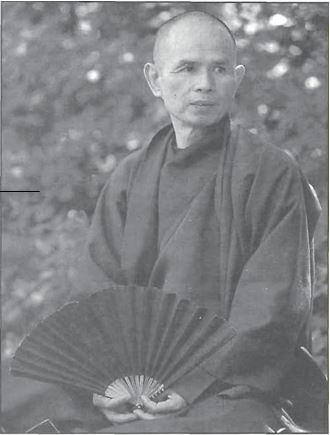
In my last cell, for twelve years I was only able to look at a brick wall. Here there is a small window where I can see the city and a lot of trees. The first time I came in touch with trees, I was so moved that I cried. When I see the sunset through this little window, I feel a lot of happiness.
If one day I am executed, I can accept that. I wish that from this garbage, I can transform into a flower. During my search for peace, I have learned to accept myself as well as those around me. ……
I write to you hoping that these simple words can share with you the humanness in me. I write, not in the name of one person on death row, but as someone who has been sent to prison to learn and grow in a situation where there is little hope for the future. My main point is to tell you, Thay, that humanness exists in me and that a death row prisoner can find peace and joy in hell. Please take good care of yourself.
Kshitigarbha is you, me, both of these prisoners, and many others. We only need to train ourselves, and we will be able to reach into the places of utmost suffering and oppression. The ability to love, understand, act, save people, and vow not to abandon those who suffer are qualities in us that we cannot deny. If you say you have a lot of love but you don’t do anything when you are needed, that is just talk.
We know from our direct experience that these four bodhisattvas and many other luminous beings exist. We can see their qualities in many people and ourselves. The practice is to learn ways to make the Avalokiteshvara, Manjushri, Samantabhadra, and Kshitigarbha inside of us grow.”Excerpts were taken from a Dharma Talk titled ‘Cultivating our Bodhisattva Qualities‘ at Plum Village on January 15, 1998. Translated into English by Sister Chan Khong. Edited for publication by Brother Phap Hai, Arnold Kotler, and Leslie Rawls. You can find the full transcript here.


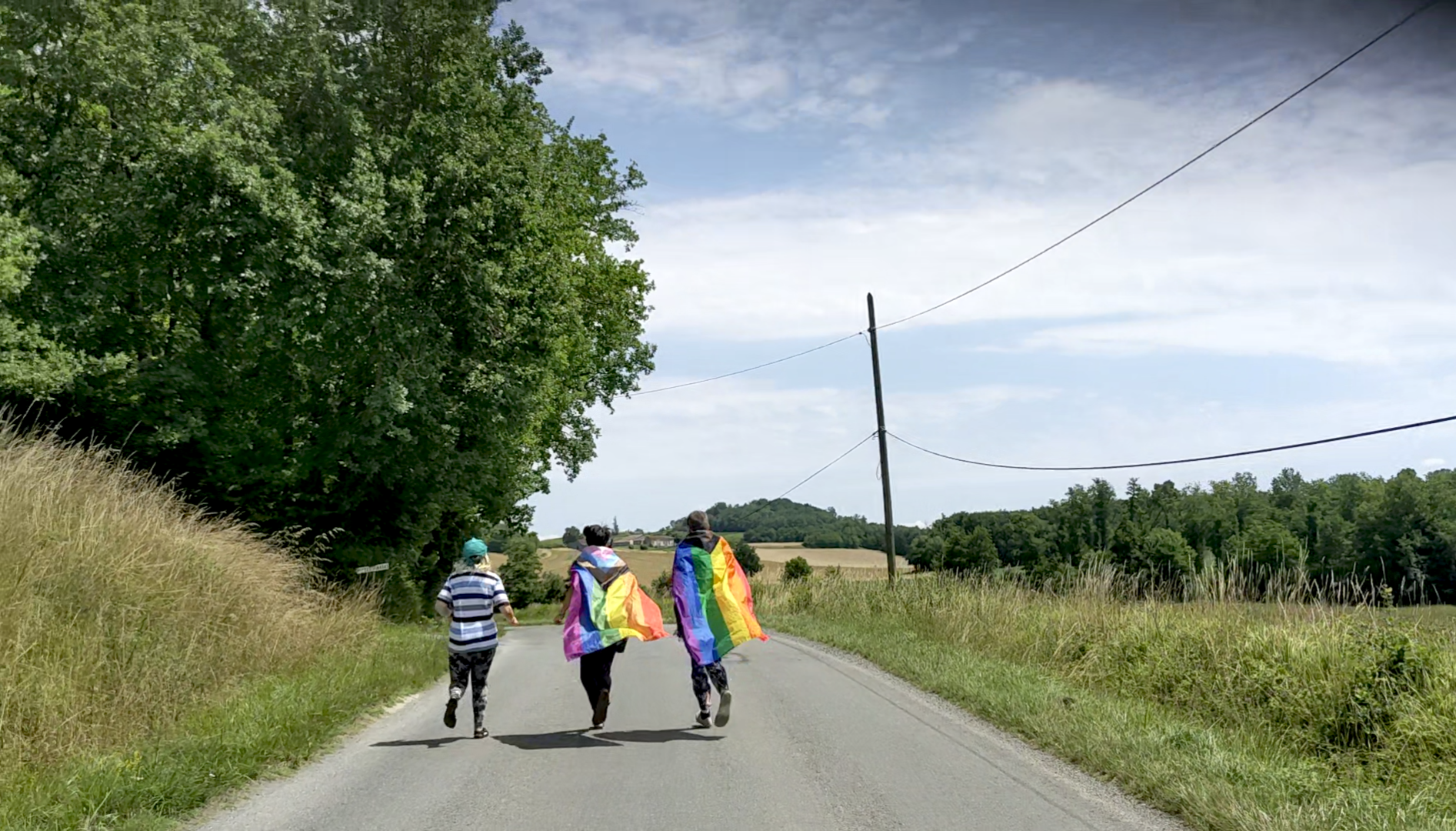
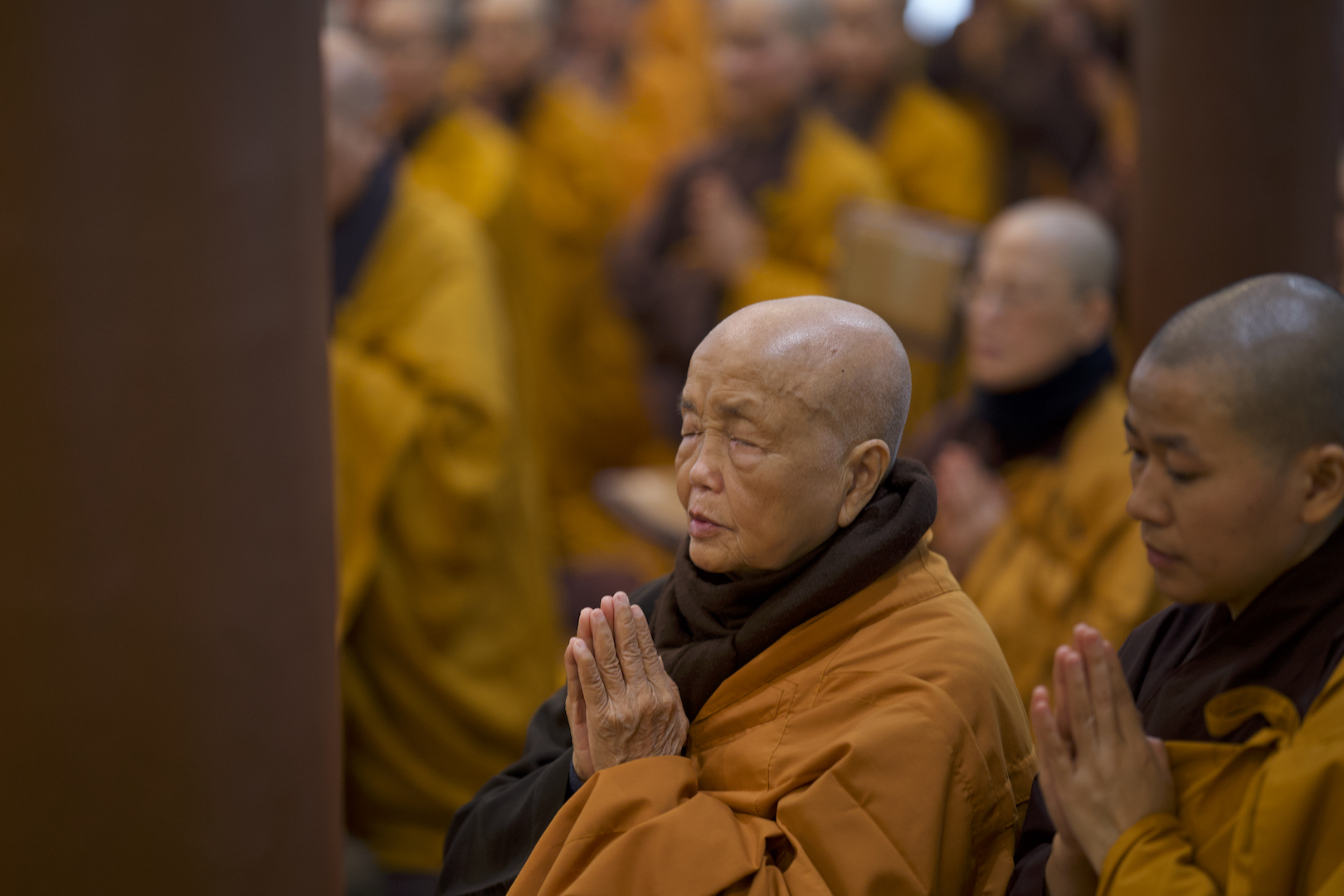

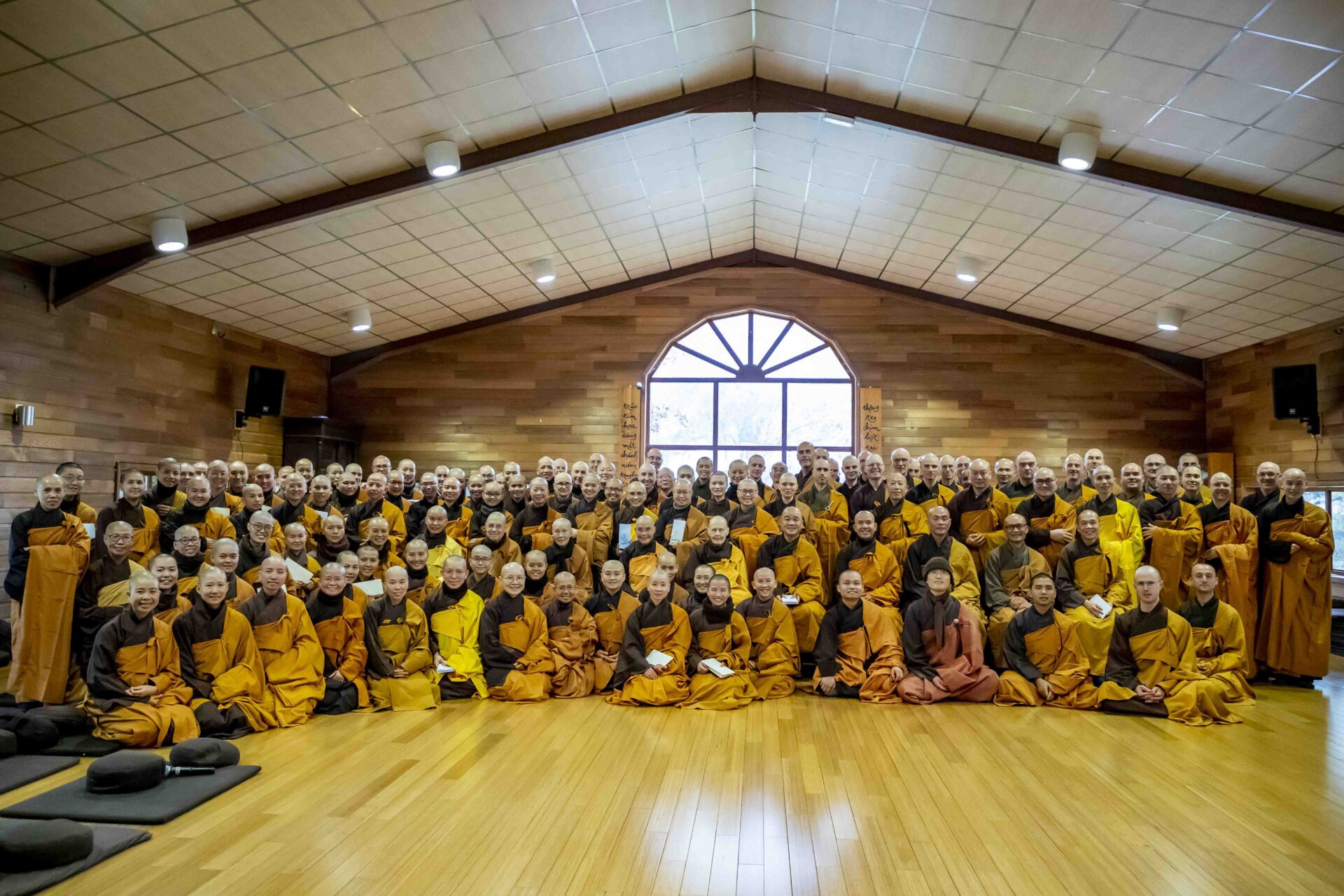
Contribuisci a questa conversazione